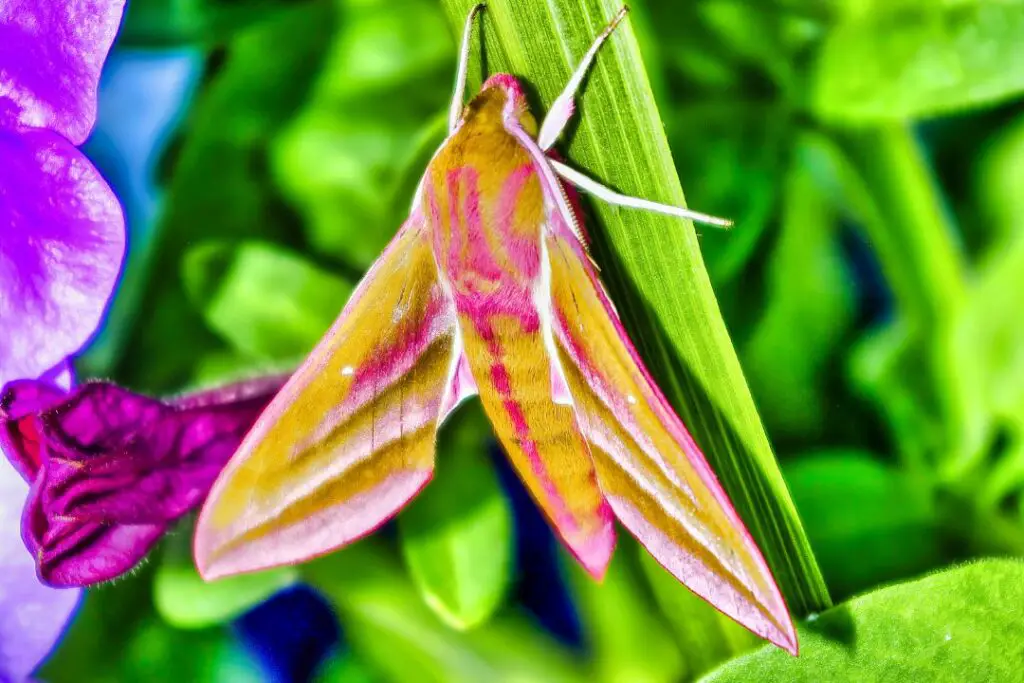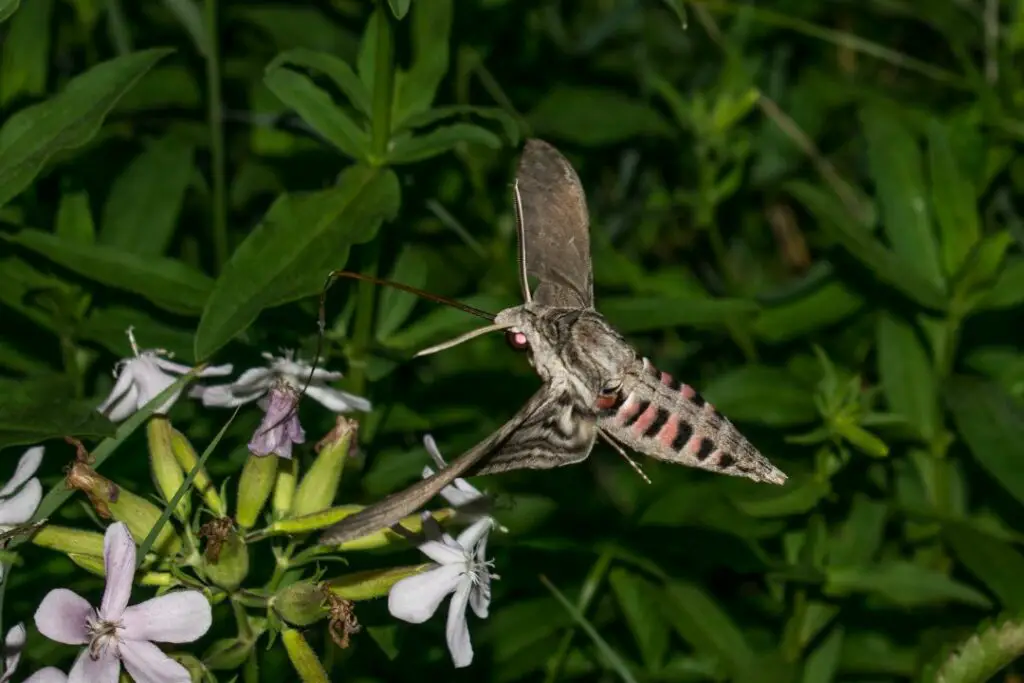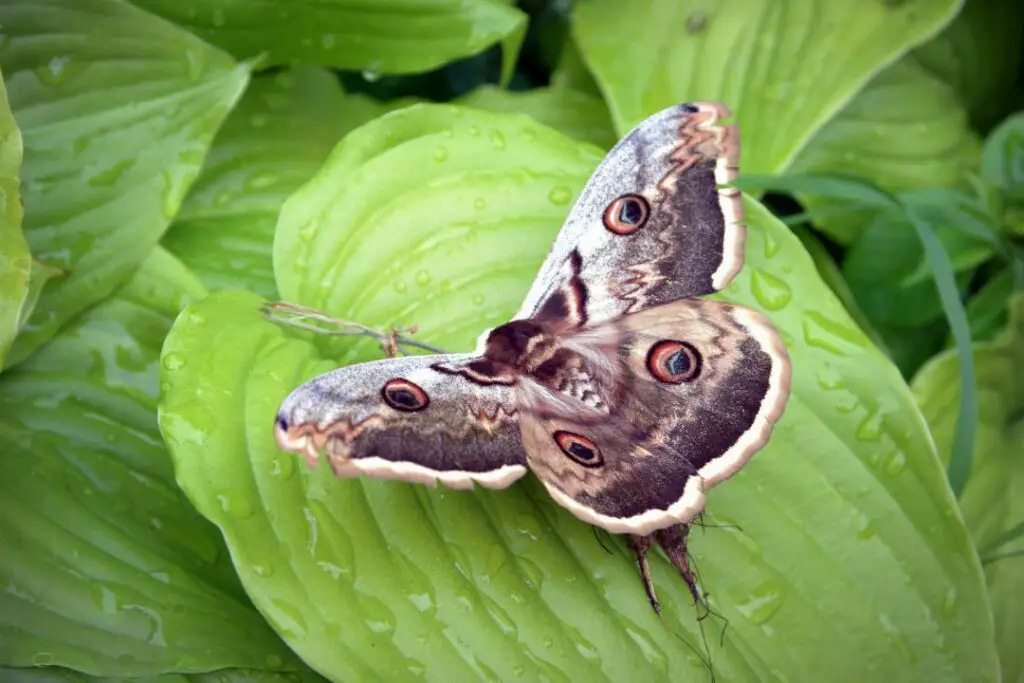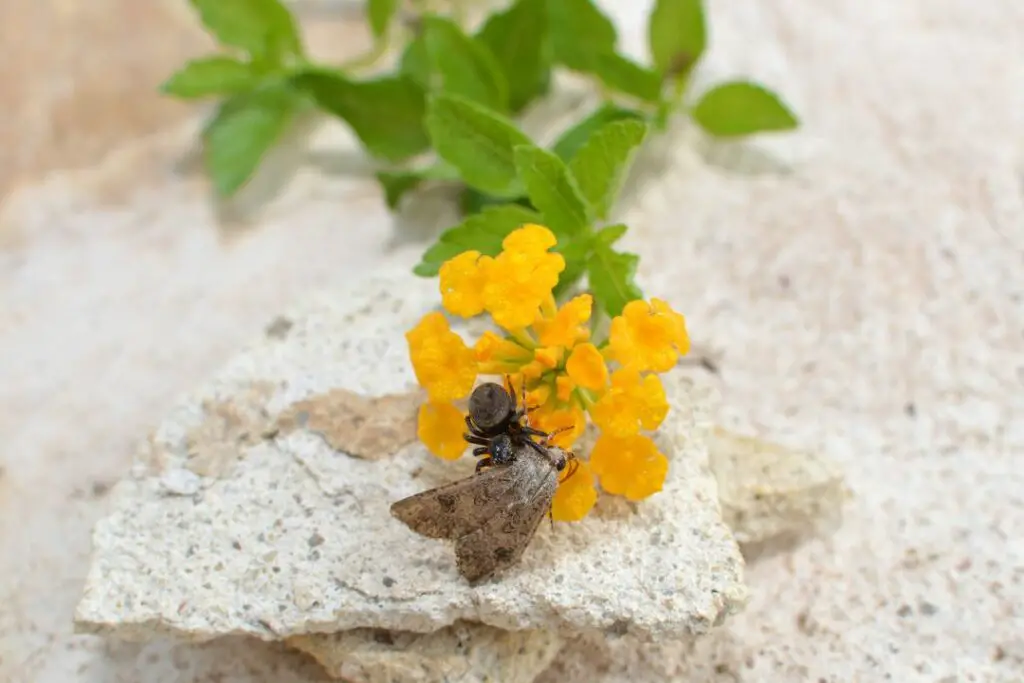Are you wondering when those fluttery, nocturnal creatures known as moths make their grand appearance in the British Isles?
Well, you’re in the right place. Let’s dive into the world of moths and find out when moth season hits and why these amazing insects are so important to our gardens and wild spaces.
When Is Moth Season in the UK? A Deep Dive into Moth Cycles and More
The moth season kicks off in late spring and lasts until early autumn. But don’t be fooled; it’s not a one-size-fits-all affair. Different species have their active periods.
Moths have their seasonal calendar, and it’s as fascinating as it is diverse.
But before you think of them as just another pest, let’s dive into the nitty-gritty of when moths start to become active, what they eat, and how they can affect your wardrobe.
Each stage has a timeline from egg to larva and then to adult moths. Here are some common UK species you can spot through the moth season.
| Month | Activity Level | Common Species | What to Look For |
|---|---|---|---|
| March – April | Low | Oak Beauty | Light brown wings. Often found near oak trees. |
| May – June | Moderate | Elephant Hawk-moth | Vibrant colours; attracted to nectar-rich plants. |
| July – August | High | Peppered Moth | Light and dark forms; loves light sources. |
| September | Moderate | Canary-shouldered Thorn | Yellowish tint; drawn to light and sugary substances. |
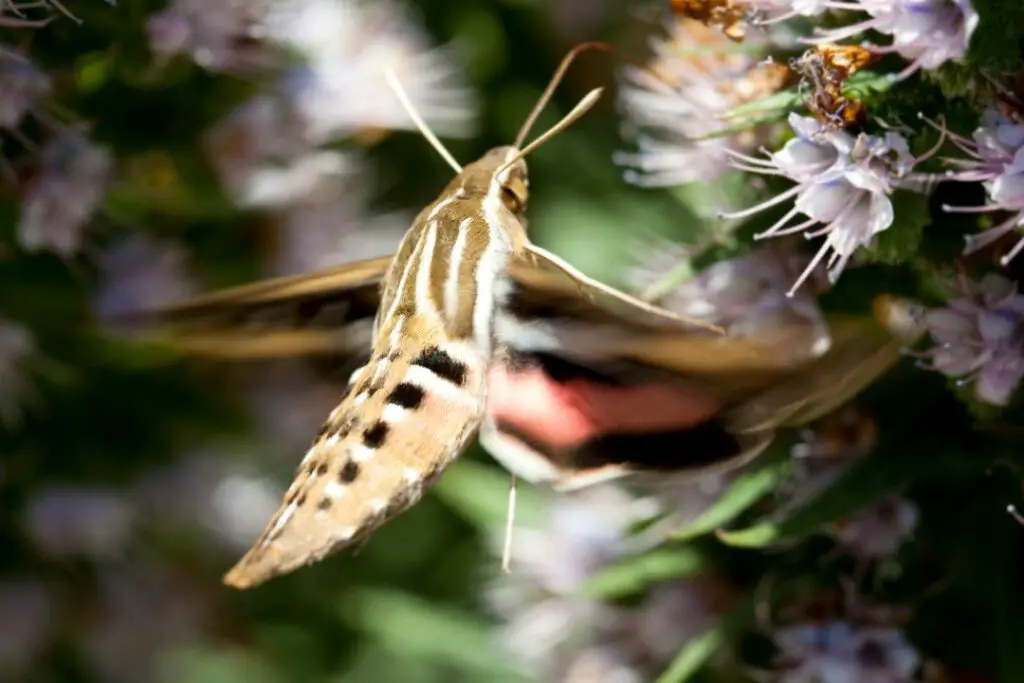
The exceptions to the rule
Of course, nature loves to throw curveballs. Some species of moths are active outside of the typical season.
The Winter Moth (Operophtera brumata) is active from November to January. So, if you’re a moth aficionado, there’s something to look forward to all year round!
Why Do Moths Matter? More Than Just a Flutter in the Night
“Who cares about moths?” you might ask. Well, you should, and here’s why.
Moths are more than just those fluttery beings you see around your porch light. They’re ecological rockstars, playing vital roles in various ecosystems.
Night shift pollinators
Bees get a lot of credit for pollination, and rightly so. But moths? They’re the unsung heroes working the night shift.
Some plants specifically rely on moths for pollination. These plants often have white or pale flowers that open at night, releasing a strong scent to attract their favoured pollinators.
The Evening Primrose opens its flowers in the late afternoon or early evening, just in time for the Hawk-moth to come along and work its pollination magic.
An important food source
It’s not the nicest thing to think about, but moths are a massive part of many animals’ diets. Birds love them. Bats adore them. Some spiders can’t resist them, and their larvae are exceptionally nutritious and packed with protein and other essential nutrients.
If moths were to disappear, it would create a domino effect in the food chain. Predators that rely on moths for sustenance would struggle, leading to a domino effect throughout the ecosystem.
Learn more about the hunters in your garden using our guide on the animals that hunt and eat moths.
*Interesting fact – Moths are like the canaries in the coal mine for ecosystems, so a decline in moth numbers can be a red flag for issues like pollution or habitat loss.
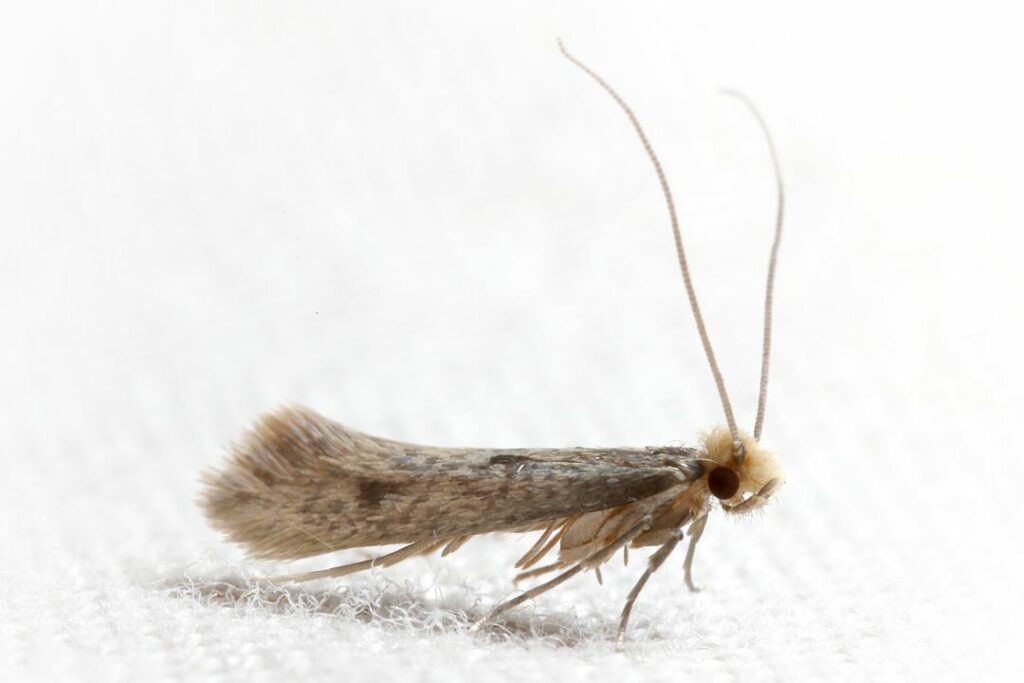
The Dreaded Clothes Moth Ruining Your Wardrobe
Clothes moths, the bane of fashionistas and wool lovers alike. These pests have earned moths a bad rap, and for good reason.
Females of the species have a knack for laying eggs in the most inconvenient places. We’re talking dark, undisturbed areas like the back of your wardrobe, a quiet drawer, or even the cracks and crevices of your closet.
Here’s a picture of the exact species to
From egg to wardrobe terror
Once the female moth finds that perfect spot, she lays her eggs, which will hatch into larvae in about three weeks. These larvae are not picky eaters; they’ll munch on natural fibres like wool, silk, and even your sweat-soaked gym clothes.
The larvae feed on the protein and keratin in these items, causing significant damage that can leave your favourite clothes moth-eaten and ruined.
Why the season matters
Understanding the time of year when clothes moths are most active can help you break their lifecycle. Female moths lay eggs during their active period, and these eggs hatch into larvae within about three weeks. The larvae then feed on natural fibres, causing damage to your clothing.
Key Lifecycle Stages
- Egg: Laid in dark, undisturbed areas.
- Larva: Hatches and feeds on natural fibres like wool and silk.
- Adult: Flies off to mate and lay more eggs.
How to beat the moth-eaten blues
We love all insects here at Revive a Bee, so we want to help you with moth-friendly solutions to keep your clothes safe.
- Clean and wash – Regularly wash your clothing, especially items you don’t use often. Moths love to hide in undisturbed areas, so shake things up by washing and wearing these items. Once clean, store them in sealed boxes or bags to keep moths out.
- Cedar – Cedar blocks are a natural moth deterrent. Place in your wardrobe, drawers, and storage boxes to keep adult moths at bay.
- Heating – Be cautious when turning up the heating during winter. Warm, damp conditions can trigger a second wave of moth activity. Keep your storage areas dry and well-ventilated to deter these pests.
- Lavender and Eucalyptus – Lavender and Eucalyptus’s strong scent is a natural moth deterrent and keeps your clothes smelling fresh.
- Seal cracks – Sealing cracks and crevices stops clothes moths from finding dark, undisturbed areas to lay their eggs.
So, whether you’re a fan of natural scents like lavender and eucalyptus or ready to get down and dirty with some sealant, these methods offer practical ways to keep moths at bay without resorting to nasty chemicals or inhumane traps.
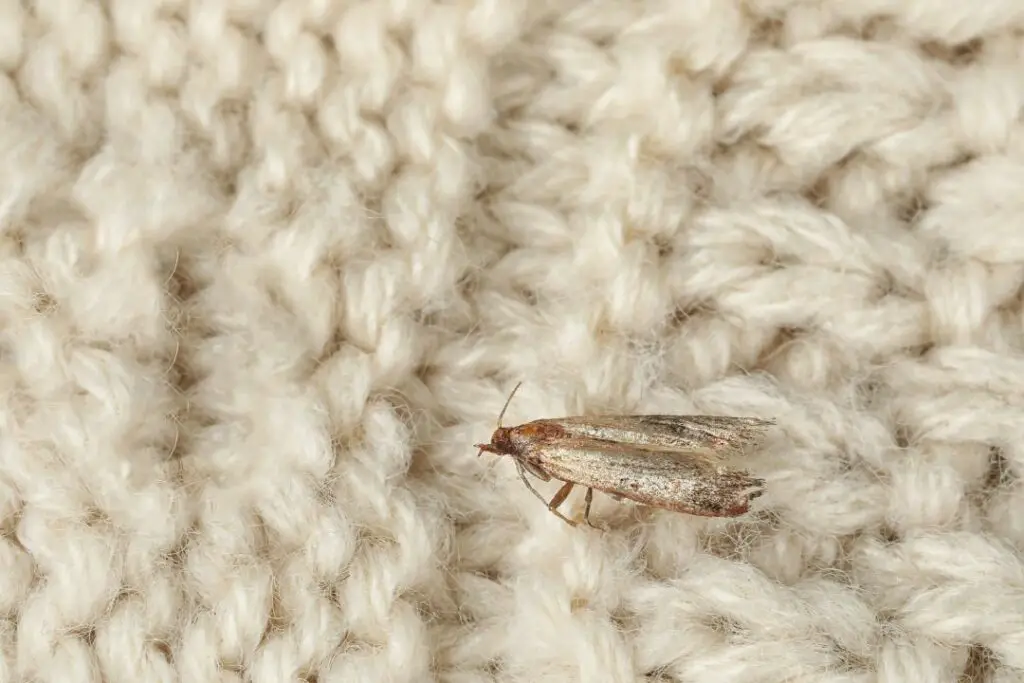
In Conclusion
So there you have it, folks! Moths in the UK are more than just fluttery beings that dance around your porch light; they’re ecological superheroes, pollinators, and even a food source for other animals.
Understanding their active seasons and lifecycles can satisfy your curiosity and even help you protect your cherished garments.
Remember, knowledge is power. The more you know about these fascinating creatures, the better equipped you’ll be to appreciate them for their role in nature while safeguarding your home and wardrobe.
So the next time you see a moth fluttering around, give it a nod of respect. It’s doing its part in the grand tapestry of life.

